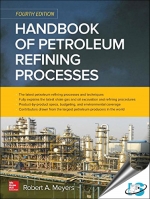Tab Article
GAIN A COMPLETE UNDERSTANDING OF THE LATEST PETROLEUM REFINING PROCESS TECHNIQUES
This authoritative resource will prove essential for anyone who needs current, expertly written coverage of the latest developments in the petroleum refining process industry. This fully revised Fourth Edition is a complete compendium of licensable technologies for the refining of petroleum and production of environmentally acceptable fuels and petrochemical intermediates. It delivers in-depth coverage of today's petroleum refining technologies, methods, and best practices.
Handbook of Petroleum Refining Processes, Fourth Edition features chapter contributions from experts at some of the world's leading petroleum companies, including: Amec Foster Wheeler, CB&I, Chevron Lummus Global, Honeywell UOP, Sinopec, and Technip Stone & Webster. Within its pages, you will get complete details on the excavation and production of coal, diesel, and heavy crude as well as fuels such as shale oil and gas. Product specifications, economics, and global environmental regulations are thoroughly explained.
If you are looking for clear, up-to-date, and reliable coverage of the latest technologies serving the petroleum industry, your search ends here.
This updated Fourth Edition covers:
- Alkylation and Polymerization
- Base Aromatics Production Processes
- Catalytic Cracking
- Dehydrogenation
- Synthesis Gas and Hydrogen Production
- Hydrocracking
- Hydrotreating
- Isomerization
- Separation Processes
- Sulfur Compound Extraction and Sweetening
- Visbreaking and Coking
- Catalytic Reforming
- Oxygenates Production Technologies
- Olefins from Methanol
- Hydrogen Processing


